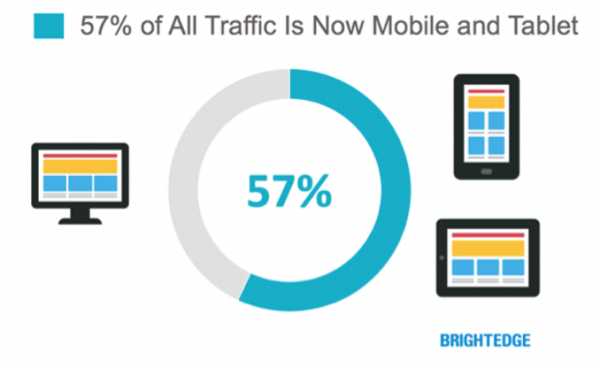We know the tipping point has passed: more web traffic comes from mobile devices than desktop. Still, your web content strategy, if it has embraced the “Mobile-First!” mantra, is probably in an early stage of transformation, most likely reflected in UX, design, and technology solutions to optimize how your content displays on mobile devices. Of course, the purpose of your mobile-friendly content—to convey information in words and images—needs to be considered and optimized as well.

Chances are, your site has amassed a substantial collection of legacy web pages authored under editorial best practices. A mobile-first strategy evolves best practices to include what we might call “Content Authoring Optimization,” an approach that aligns content strategy with UX, design, and technology optimization solutions.
Regardless of your state of digital transformation, using a mobile-first approach can help you review legacy content and ensure it aligns with the authoring optimization you are applying to new content. Also, a webpage-by-webpage review with analytics at hand provides you with a formal opportunity for assessing clarity, improving SEO, ensuring content supports business goals, and weeding out content that is no longer relevant.
Do We Really Need All This Stuff?
If content migration is in your future, you will especially benefit by evaluating the effectiveness and value of your legacy content. A content audit with analytics is essential for guiding your decision-making and for tracking migration on a per-page basis.
But even if migration isn’t looming, an audit is a valuable tool for assessing your content from a mobile-first approach. Think of approaching your legacy content, then, as you do when preparing to move to a new home or a new workspace. All that stuff in the attic, basement, and garage, or in, on, and under your desk… Do you really need all of it?
The Mobility Now! Approach to Web Content
All that content seemed important once upon a time. That was then, when “more web content” was a strategy and the bandwidth for it expanded to the clouds. Recent content strategy trends, however, emphasize purposeful, targeted content “focusing on quality and actual value, as opposed to quantity or output,” as summarized in a Marketing Insiders Group outlook for 2018. Another view to consider in your evaluation is expressed in the Gartner post, “Think Mobility, Not Mobile,” where “Mobility” represents content optimized in its messaging and display for access from any source.
Those representative articles on content strategy trends are helpful for your evaluation of legacy content (keep what is valuable) and new content (create new content once for access on any sized screen). So, armed with analytics (measured value) and best practices (Content Authoring Optimization), it’s time to evaluate your legacy content.
The Four Rs for Evaluating Legacy Web Content
We recommend the “Four Rs” approach—Renew, Refresh, Repurpose, or Remove—for assessing and taking action on each webpage with legacy content.
Renew
The page is good as is. For this review outcome, think in terms of managing your personal subscriptions and making a formal decision to renew rather than having a subscription automatically renew through your complacency.
Refresh
The information is valuable, but the content is dated, requires scrolling on mobile devices without engaging headers to break up walls of text, and there are opportunities for improving SEO. If the content is worth keeping, it is worth refreshing.
Repurpose
You will find content that overlaps with the same topic on another page, one or two lines of text occupying a full page but associated with a larger topic, or lengthy passages without helpful context, including engaging headers. Consolidating content from multiple pages, guided by authoring optimization, is an excellent way to improve content, display, discoverability, and navigation. As a bonus, you will cut the number of web pages a user has to navigate and you will have fewer pages to maintain.
Remove
The page has few recorded views over an extended period. If it serves a current business goal, then it’s time to refresh or repurpose. But, say to yourself, “if we are really moving forward with Content Authoring Optimization and Mobility Now!… Do we really need all this stuff?”
Upgrading your legacy content, including trimming excess, will result in a more holistic and cohesive content strategy that considers all access points and helps you prepare to evolve further as the next big thing comes along.
